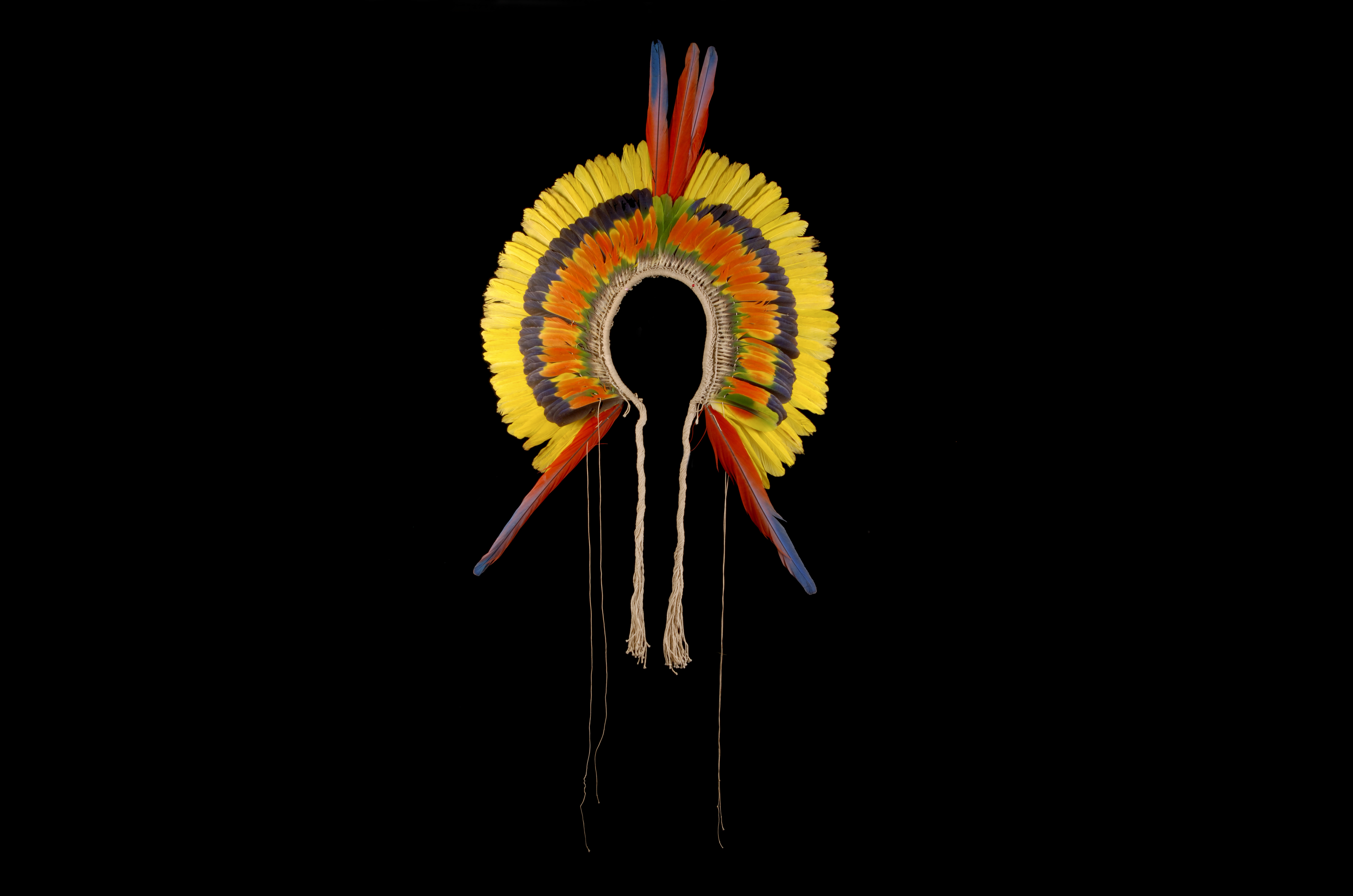The Museum of Archaeology and Ethnology of the University of São Paulo (MAE-USP) is one of the university’s four statutory museums along with the Museum of Contemporary Art (MAC), the Museu Paulista and the Zoology Museum, and was created in 1989 through Resolution no. 3560 of 11 August 1989 under the rectorship of the physicist José Goldemberg (1928-). This resolution brought together in a single institution the archaeological and ethnographic collections of the Museu Paulista, the Plínio Ayrosa Ethnographic Archive of the Faculty of Philosophy, Languages and Human Sciences (FFLCH), the Institute of Prehistory and the former Museum of Archaeology and Ethnology – the latter was initially created in 1964 as a Museum of Art and Archaeology by the professor of Ancient History, Ulpiano Toledo Bezerra de Meneses (1936-). The justification for merging these collections, human resources, and institutions took into account the inconvenience of the duplication and overlapping of similar bodies and activities at the same university, as well as the dispersion of various similar museums, institutes, publications, human resources, and budgets.
Based on this history it can be observed that the origins of MAE’s oldest collections trace back to the Museu Paulista in the nineteenth century when the latter institution was opened in 1895 as a natural history museum. Today MAE houses a collection of approximately one million items characterized by a broad diversity of collections in both territorial and temporal terms: it possesses archaeological collections relating to the Indigenous peoples of Brazil and the regions of America of Spanish colonization; items from the Mediterranean and the Middle East from antiquity (Egypt, Greece, Rome, and Mesopotamia); artifacts from the material culture of contemporary Indigenous societies and the African and Afro-Brazilian tradition. In relation to the collections of classical and Mediterranean archaeology, it is important to emphasize the role of Professor Ulpiano Toledo Bezerra de Meneses, while he was still at MAE-USP, in articulating the institutional objectives surrounding the European, American, and African legacies in the formation of Brazilian identity.
 Kayapó-Xikrim diadem. Credit: MAE Collection. Reproduced with permission.
Kayapó-Xikrim diadem. Credit: MAE Collection. Reproduced with permission.
As well as uniting this ample and singular material collection, MAE-USP works to preserve its patrimony through activities designed to balance and integrate its museological operations, which include the sectors of documentation, conservation, restoration, education, and expography (exhibition design), in this way seeking to manage and disseminate its collections. In addition, the museum contains several research laboratories focused on the thematic areas of each of its specialties, coordinated by academic staff from the institution on its three fronts: archaeology, ethnology, and museology. MAE also administers the Regional Centre of Archaeological Research, located in the municipality of Piraju in the interior of São Paulo state, an initiative that aims to expand its connections with regional museums and centers of archaeological research. Also notable is the journal Revista do Museu de Arqueologia e Etnologia, which has become an increasingly important channel for the dissemination of articles and special issues in the three research areas in which MAE is active. The journal publishes articles in Portuguese, English, French, and Spanish.
In the field of teaching, MAE has two graduate programs, one dedicated to archaeology (offering master’s and doctoral degrees) and the other to museology. It also helps train undergraduate students by offering various courses for those taking degrees at the University of São Paulo, in an interdisciplinary approach that impacts not just MAE but also the student body of other university departments collaborating with the institution. It needs to be emphasized that the consolidation of graduate courses in archaeology at MAE-USP is a legacy of the concentration on the area of archaeology by the Graduate Program in Social Anthropology of the University of São Paulo. Also as a result of this proximity, the museum’s academic staff has included anthropologists researching Indigenous material culture like Thekla Olga Hartmann and Sonia Ferraro Dorta, as well as other partnerships that have led to the development of centers of anthropology including the Centre of Amerindian Studies (CESTA) at the University of São Paulo Department of Anthropology.
As part of its curatorship process – understood as the complete cycle of activities carried out with its collection – MAE has developed museological-curatorial initiatives with different Indigenous societies in a collaborative approach. In this new modality of action, Indigenous people are transformed into the protagonists of this curatorial process, engaging in reinterpretations and resignifications of this collection and helping establish a new level of conduct within the institution, which is now rethinking its role in wider society. An example is the temporary exhibition Resistance Now! Strengthening and uniting the Kaingang, Guarani Nhandewa and Terena Indigenous cultures, inaugurated in 2019 and currently open to visitors. In addition, members of diverse Indigenous peoples frequently visit its stored collections, seeking references among these items to identificatory matrices of their own peoples as part of the process of reconstructing their ethnic memories.
MAE still lacks a space adequate to the size of its large and important collection as it has been located since its foundation in loaned spaces, such as the rectory building, the History and Geography Building, D Block of the Residential Buildings of the University of São Paulo (CRUSP), and, currently, the building formerly belonging to the USP Construction Fund (FUNDUSP). Since 2023, the University of São Paulo has been providing support so that a new space can be achieved that reflects MAE-USP’s standing as a leading center of reference in the field of museology, archaeology, and ethnology in Brazil.
How to cite:
Vasconcellos, Camilo de Mello. 2024. Museum of Archaeology and Ethnology of the University of São Paulo. Translated by David Rodgers. In Enciclopédia de Antropologia. São Paulo: Universidade de São Paulo, Departamento de Antropologia.
https://ea.fflch.usp.br/en/institutions/mae-usp
ISSN: 2676-038X (online)
[ PDF version ]
Camilo de Mello Vasconcellos
Translated by David Rodgers
https://www.revistas.usp.br/revmae/about
BRUNO, Maria Cristina Oliveira, O Museu do Instituto de Pré-História: um museu a serviço da pesquisa científica, Dissertação de Mestrado em História, FFLCH-USP, 1984
BRUNO, Maria Cristina Oliveira, Musealização da Arqueologia: um estudo de modelos para o Projeto Paranapanema, Tese de Doutorado em Arqueologia, FFLCH-USP, 1995
CURY, Marília Xavier, “Política de gestão de coleções: museu universitário, curadoria indígena e processo colaborativo”, Revista CPC, 15 (30esp.), 2020, p. 165-191
FLORENZANO, Maria Beatriz Borba. & FLEMING, Maria Isabel D’Agostino, “Trajetórias e perspectivas do Museu de Arqueologia e Etnologia da USP (1964-2011)”, Revista do Instituto de Estudos Avançados, São Paulo, 25 (73), 2011, p. 217-228
SILVA, Mauricio André da, Abordagens educacionais para uma arqueologia parente com comunidades tradicionais da RDS Amanã e da FLONA Tefé, Amazonas, Tese de doutorado em Arqueologia, MAE-USP, 2022
VASCONCELLOS, Camilo de Mello, “Arqueologia e educação patrimonial: a experiência do MAE-USP”, Revista CPC, 14 (27 esp), 2019, p. 255-279
UNIVERSIDADE DE SÃO PAULO, Resolução USP - nº 3560 de 11/08/1989.

